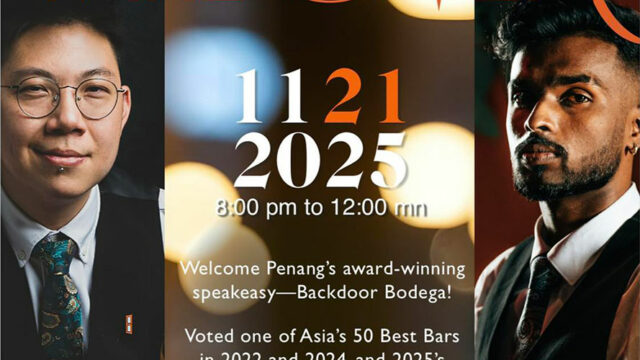We have long known that public education needs both special attention and money. As early as 1968, Congress created the Special Education Fund (SEF) through Republic Act No. 5447, setting aside money to pay for classrooms, textbooks, equipment, teacher salary adjustments, and scholarships.
Under RA 5447, the SEF was funded by earmarking portions of real property and cigarette taxes to the Department of Education (DepEd). The law conveyed that education mattered enough to deserve an additional tax base and its own fund, not just whatever was appropriated in the general budget.
That principle was carried over into the 1991 Local Government Code, which devolved public services, including education, to local government units (LGUs). Control over the SEF was transferred to local school boards from DepEd, with funding drawn from an additional 1% real property tax collected by LGUs.
Yet after 57 years of the SEF, there is still no convincing evidence that the fund, in its current design, has systematically lifted the public school system out of its chronic problems. Classroom and teacher shortages persist, and inequalities between schools in rich and poor LGUs endure.
Studies point to a familiar pattern: some cities and municipalities manage the fund well and see local gains, while others underspend, misalign priorities, or simply park SEF balances in bank accounts while learners struggle in overcrowded, under-equipped classrooms, and from lack of teachers.
Reports indicate that from 2018 to 2022, the SEF accumulated an unspent balance of P15 billion sitting idle in LGU bank accounts, earning interest. Clearly, money is not the problem, governance is. The way we govern and spend education funds has not been enough to improve outcomes at scale.
The Department of Finance’s (DoF) call for SEF reforms is therefore timely and necessary. But Congress should also take a long, hard look at what has transpired since 1968 and make an informed decision on how best to redesign the SEF and make it the true helping fund that it was meant to be.
With former senator and congressman Sonny Angara now heading the Department of Education, he is in a position to propose practical, politically feasible reforms. Of all people, he understands how Congress works, and how the budget process can be misused to benefit the unscrupulous.
There is more to this issue than money. There are local cases where the SEF was well-spent, producing positive outcomes. But across the country, the fund remains underutilized and inefficiently managed. A full overhaul may be necessary to confront the systemic weaknesses in our education governance.
Available analyses show a mismatch between what schools need (classrooms, teachers, or learning materials, etc.) and how LGUs spend SEF money, often prioritizing infrastructure and sports facilities. In many cases, funds simply sit in banks earning interest, while students share textbooks or study under trees.
This suggests that underutilization stems not from lack of revenue, but from poor planning, weak coordination with the DepEd, and inadequate administrative capacity at the local level. Governance failures, rather than corruption or revenue shortfalls, appear to limit educational outcomes.
To be fair, the SEF has financed classrooms, teaching materials, and even teacher supplements for over five decades. While some studies indicate good results where the fund was planned and spent well, I have yet to see any national study proving that the SEF, as currently designed, has systematically improved the performance of the public school system in the last 50 years.
Imagine how much money is raised nationwide every year through the additional 1% real property tax earmarked for education, on top of the basic RPT. These proceeds flow to local school boards to support school operations, minor infrastructure, learning materials, sports development, and other programs.
I am certain that both DepEd and DoF are exploring ways to standardize planning and require LGUs to align SEF spending with DepEd priorities and local development plans. The DoF is also monitoring SEF collections and utilization by LGUs. My concern lies in any pending proposal to double the SEF rate and expand its scope of spending at the same time.
There is a proposal to raise the SEF from 1% to 2% of real property tax, and to allow its use for a wider range of activities such as Special Education (SPED), Open High School, madrasah, flexible learning, feeding and health programs, mental health, and child-protection services, among others. These are all worthy causes, but the expansion may be a case of too much, too fast, especially when the present SEF is not efficiently utilized.
Before we double the SEF tax, the DepEd, DoF, and LGUs must first prove they can spend the current 1% properly. The P15-billion unspent balance from 2018-2022 already proves otherwise. Capacity and governance issues must be fixed before asking taxpayers for more money.
If property taxes rise and SEF collections double, but the funds still sit idle or go to token projects with little impact, the reform could be politically suicidal for LGUs. More so now that citizens are more aware of how public money can be misused, as seen in recent flood control projects scandal.
A higher SEF rate could also widen the gap between schools in rich cities like Quezon City or Makati and poor municipalities in the provinces, unless a redistribution or equalization mechanism is put in place. The DepEd should be empowered to use national funds to augment the SEF of poorer LGUs, particularly for school construction and teacher hiring.
A bigger SEF, if inefficiently used, can also turn local school boards into battlegrounds for local politics, with mayors and school officials fighting over control of the fund. This invites abuse, politicization, and corruption in procurement. And even if used honestly, what guarantee is there that a bigger SEF will lead to better educational outcomes?
Almost six decades of SEF experience already exposed the system’s weaknesses. These must first be corrected before raising additional money. Reforms must proceed sequentially, not in parallel. Safeguards, performance benchmarks, and accountability measures should come first. Tax hikes can follow.
Otherwise, we risk repeating the same mistakes that have kept our public school system chronically underfunded, underperforming, and underdelivering on the promise of quality education for all. We might just be raising more money to mismanage and squander.
Marvin Tort is a former managing editor of BusinessWorld, and a former chairman of the Philippine Press Council
matort@yahoo.com

















